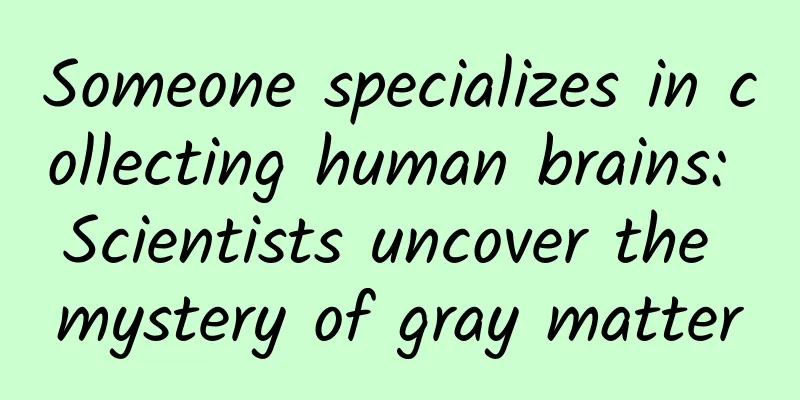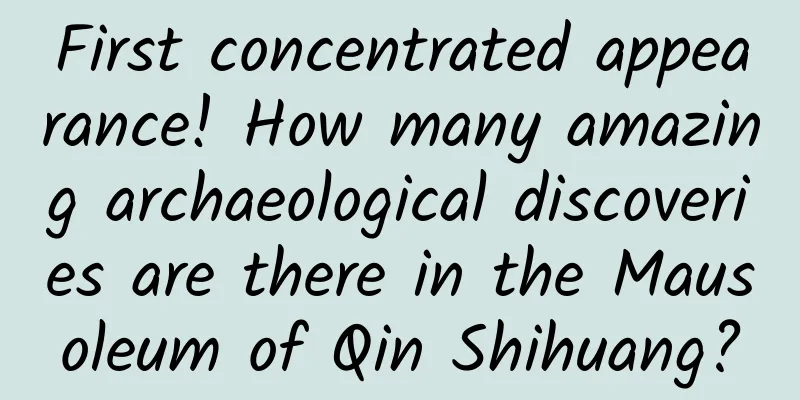Someone specializes in collecting human brains: Scientists uncover the mystery of gray matter

|
Leviathan Press: It is a sad fact that people who suffered all kinds of misfortunes during their lifetime can have intact brain tissue preserved several years after their death. And all this started with a molecular paleontologist who worked in the funeral industry and frequently suffered from cluster headaches. Alexandra Morton-Hayward, 35, a former undertaker turned molecular paleontologist, was caught in a torrential downpour on the Belgian plains after five hours of driving across three countries in a rented Vauxhall. The windshield wipers were at full throttle, blurring the green fields of Flanders. Behind her sat a black picnic cooler. Within 24 hours, it would be filled with human brains – not modern specimens, but brains that had pondered this land in the Middle Ages and, miraculously, survived to this day. For centuries, archaeologists have been puzzled by the discovery of certain ancient remains that lack all soft tissue. Morton-Hayward, who is pursuing her PhD at the University of Oxford, now owns the world's largest collection of ancient brain specimens, some of which are 8,000 years old. And by delving into centuries of scientific literature, she has compiled an astounding catalog of cases - more than 4,400 well-preserved brains dating back 12,000 years. Using advanced techniques such as mass spectrometry and particle accelerators, she is leading a new study that seeks to reveal the molecular secrets of how some human brains have been able to outlast Stonehenge or the Great Pyramid of Giza. The research has the potential to unlock not only mysteries of the past, but of the present as well. Molecular processes that damage our brains may, Morton-Hayward proposes, help preserve them after death — a finding that could reshape our understanding of aging and neurodegenerative diseases. On that stormy day, Morton-Hayward set out to collect 37 recently excavated brains from a medieval cemetery in Belgium. She exudes sympathy and humor as she chats, and appears at ease talking about cutting up brain tissue. While working in the funeral industry, she handled thousands of bodies, moving organs and draining bodily fluids while speaking easily as if these “clients” were still alive. As the rain intensified, Morton-Hayward slowed down. She felt an uneasy foreboding, a condition she called “werewolf” approaching. Her cheeks began to heat up, and she took one hand off the steering wheel to pat them. “I can feel my face getting hot,” she muttered. “I need to take my medicine.” Another storm was brewing inside her own skull. She suffered from cluster headaches every night, the pain of which was like being repeatedly stabbed in the eye with an ice pick or hit in the eye with a stick. The fatigue of driving for long periods of time in bad weather triggered a return of symptoms earlier than usual. “It’s one of the most painful diseases known to humans,” she said. “It’s called the ‘suicide headache’ because 40% of patients eventually just want it to end. In that sense, I’m always aware of my brain. Sometimes it feels worse than the brains in my lab.” Normally, the brain is our most vulnerable organ. Minutes after losing its blood or oxygen supply, neurological damage begins, followed by decomposition. Within hours of death, enzymes in the brain begin to break down cells from the inside, a process called autolysis. Within days, cell membranes rupture and the brain liquefies. Eventually, the blood-brain barrier fails, allowing microorganisms to enter and feast on the nutrient-rich "feast" - a disgusting process known as putrefaction or "rotting" in colloquial terms. If the body is exposed, it may also attract maggots, insects or rodents to gnaw on the remains. Soon, only a hollow skull is left. However, decomposition slows underwater or underground (the deeper you are buried, the slower it decomposes), but most bodies will be skeletonized within 5 to 10 years. Because of this, scientists long failed to appreciate that brains can sometimes remain intact for thousands of years without any preservation, freezing or mineralization. For generations, ancient brain discoveries were often treated as exotic curiosities, forgotten or simply discarded. Now that’s starting to change. In her lab in Oxford, Morton-Hayward fills two freezers with brain specimens in takeout containers and plastic bags. More specimens sit in crates at room temperature. Above her desk, cookie jars, small bottles and glass slides also hold brain samples. Her collection is so large that some specimens have been moved to off-site storage—enough to fill three more freezers. Mindful of the tragic losses of specimens elsewhere, she bought a generator in case the power goes out. (In 1986, brain specimens from an 8,000-year-old burial in Florida were destroyed when a refrigerator lost power.) Alexandra Morton-Hayward, molecular paleontologist at the Department of Earth Sciences at the University of Oxford. © Alicia Canter Over the past five years, Morton-Hayward has collected more than 600 brains from scientists around the world. Her largest haul (450 brains) came from a cemetery in southwest England that contained the remains of 18th- and 19th-century workhouses, insane asylums, and prisoners of war. Dozens more came from a mass grave in Philadelphia that allegedly held victims of a yellow fever epidemic. The oldest sample of brain tissue came from an unfortunate Swede whose head was smashed, cut off, and impaled on a pole 8,000 years ago. “In my experience, people are happy to give me specimens,” she said. “Some archaeologists have a real aversion to soft tissue.” In the lab, she opened a plastic container and carefully removed her “show dog,” a specimen she calls Rusty—a reddish-brown brain from a pauper’s grave, its deep grooves visible. “He’s my favorite,” she said, cradling the specimen in her gloved hands. “Sorry, it might smell like formaldehyde.” Morton-Hayward collects brains from around the world. © Alicia Canter The brains had one curious thing in common: Many came from people whose lives ended in agony. "A lot of the places where we find these well-preserved brains are places of great suffering, frankly," Morton-Hayward explained. Morton-Hayward's fascination with the brain can be traced back to a very specific point in time - when her own brain began to torment her. While studying archaeology at the University of St Andrews, she began to suffer from severe headaches, and doctors could not find any cause. Eventually, an MRI scan revealed a rare abnormality: part of her brain had collapsed into the hole where the spine enters the skull, a rare condition called Chiari malformation. In her final year at St Andrews, Morton-Hayward underwent a delicate operation to relieve pressure on her brain. But the headaches didn’t go away. “It affected everything I did,” she says, “every waking moment.” Eventually, she dropped out and fell into depression. “I didn’t know why I was suffering so much, I felt completely useless, like a complete failure.” It turned out that she also had another brain disorder: cluster headaches, considered one of the most painful conditions in medicine. In the Journal of Neurology and Stroke, one sufferer described cluster headaches as “lightning-storm pain” that makes “your eyes feel like they’re literally going to pop out of your head.” The headaches, which often strike at a fixed time each day, cause sufferers to feel a constant fear and often trigger secondary conditions such as anxiety, depression, or post-traumatic stress disorder.[1] Suicide rates among cluster headache sufferers are about 20 times higher than those of the general population. (For Morton-Hayward, the exact relationship between the two conditions remains unclear. “It’s amazing how little we know about the brain,” she says. “Sometimes I find that terrifying, and sometimes I find it comforting.”) As time went on, Morton-Hayward’s pain became unbearable. She attempted suicide but woke up in a hospital. “I’ve always been a pragmatist,” she whispered. “I thought, ‘This isn’t working, let’s try something else, try to stay alive.’ ” Morton Hayward in the lab. © FEBS Network After dropping out of college, she bounced around jobs: trauma nurse, grief counselor, dishwasher, and wedding planner (which she found deeply frustrating because she thought couples cared more about tablecloths than marriage itself). Eager to try something new, she applied for a position at a funeral home in Rochester run by a coroner who had been in the business since he was 15. The interview went well, and the director showed her around. He led her into the mourning hall, a quiet room with curtains and soft music where family members say their last goodbyes. To Morton-Hayward's surprise, she saw an open casket containing the remains of an elderly woman. "The curator had his hands on the sides of the casket and was talking to me," she recalls. It was her first time seeing a dead body. "I wasn't shocked, but I thought, this is strange. I was more surprised by his obvious ease." This, she later realized, was a test to see if she was comfortable working with corpses. The answer was yes. "It was the most fun job I've ever had," she says. Over the next five years, Morton-Hayward cared for more than 5,000 bodies. She helped arrange memorial services, dressed the dead, sutured facial deformities caused by rigor mortis, placed plastic eye patches under eyelids to make bodies look like they were sleeping peacefully, and learned the art of embalming—making an incision in the femoral artery to drain bodily fluids and then injecting a preservative. Her own traumatic experience gave her a deep empathy for death and suffering. “When someone dies—no matter how old they are or whether it was expected or not—it’s devastating,” she says. “Funeral planners often become the focus of grief, anger, and frustration because you tell families they need to let go and bury their loved one. But that anger always turns to gratitude.” Morton Hayward holds a 1,000-year-old human brain. © Graham Poulter/PA Wire She began to wonder about the mysteries of the dead. “You know their favourite memories, their colours and things like that, and then you lay them on the morgue and hold their brain in your hands and you wonder: where are these memories stored?” She developed a fascination with death and decay, and how these things could be studied scientifically. “I never felt like a scientist, which is why I decided to go back to school,” she says. Despite her failing health, Morton-Hayward enrolled in online courses through the Open University in 2015 to complete her undergraduate degree. She had been ashamed of dropping out, but now began to gain confidence through her studies, winning an honorary degree and prize for her undergraduate thesis on forensic expert testimony in the Srebrenica war crimes trial. She began to feel like she wasn’t an academic failure. Maybe she could even balance a career in science with a neurological disease? In 2018, she began working night shifts at a funeral home while studying for a master’s degree in bioarchaeology and forensic anthropology at University College London (UCL). “I got tired of putting people in the dirt and decided to start digging them out,” she laughs. Morton-Hayward (left) received the British-Danish Association Scholarship in 2022. © University of Oxford During graduate school, Morton-Hayward came across a bizarre discovery that changed the course of her life. Decades earlier, a series of discoveries by archaeologists overturned the beliefs she had formed over the years in the funeral industry. She became interested in the other side of death. In 1994, an outspoken archaeologist named Sonia O'Connor was called to a dig in Hull where some 250 graves had been unearthed from a medieval monastery. The site was filled with surprises: ancient underwear, syphilitic skeletons, a massive coffin whose oak boards bore the mark of a corpulent man - described by the lead archaeologist as "a classic image of Friar Tuck from Robin Hood legend". Brain tissue from 200 years ago. © Graham Poulter/PA Wire But what shocked the excavators most was a gray-brown mass that was revealed when one of the skulls broke apart. When O'Connor came to examine the unusual specimen, she saw a shrunken, discolored organ with two brain hemispheres and the typical surface wrinkles. "I thought, This is a brain!" she recalls. But it seemed beyond common sense: The remains had been buried for more than 400 years. With the help of forensic expert Don Brothwell (who also investigated mass burials in the Balkans), O'Connor discovered that one in ten skulls at the site contained a preserved brain. The brains were shrunken, spongy or brittle to the touch, and mostly brown or rusty with black patches. The best-preserved brains came from the wettest part of the cemetery, and many had mysterious orange deposits in the soil around them. The brains were not preserved by known methods such as dehydration, mummification, or natural tanning from acidic waters. Except for the brain, all other soft tissues were gone. “If you talk to pathologists, they’ll tell you that the brain is one of the first organs to liquefy in a body,” O’Connor said. “And we’re seeing the exact opposite.” Some of the experts O’Connor consulted were skeptical. One expert even suggested that her so-called brains might just be some kind of fungus. The more O’Connor researched, however, the more convinced she became. In the early days of the internet, O’Connor could find only a handful of reports of well-preserved brains. In the late 1700s, French authorities were relocating Paris’s largest cemetery, the infamous Cimetière des Saints-Innocents, when they found brains that had been there for decades. “We cannot but be astonished, considering this remarkable resistance to destruction,” doctor Michel-Augustin Thouret wrote after examining the remains in 1791. The skeletons were moved to the quarries now known as the Catacombs, and the brains were largely forgotten. In 1902, Australian-British anatomist Grafton Elliot Smith excavated nearly 500 burials of preserved brains in a prehistoric Egyptian cemetery. He wrote regretfully: "The anatomists and anthropologists seem not only to be ignorant of the fact, but even to deny its possibility." Soon after, O'Connor learned that well-preserved brains had also been found in Britain, Denmark, the Netherlands, and the United States. However, most of these amazing discoveries were not taken seriously enough or even directly discarded, causing later scholars to be surprised every time they rediscovered these ancient specimens. Then came the most famous discovery. In the summer of 2008, a team of archaeologists from the York Archaeological Trust were excavating an Iron Age drainage channel near the village of Heslington when they found a dark skull buried face down in clay. While cleaning the skull, a lab technician heard a thumping sound inside the skull and then noticed a yellow, spongy mass. Coincidentally, the lab worker had been a student of O’Connor’s and remembered her lectures on preserved brains. She immediately called her former mentor, and O’Connor confirmed that Heslington’s find was indeed a brain.[2] O’Connor assembled an interdisciplinary team of researchers and pieced together a chilling story that they published in a 2011 paper in the Journal of Archaeological Science. Research has shown[3] that the skull is about 2,500 years old and belongs to an adult male who was decapitated and thrown into a small pond. Apart from a pinky bone, the rest of the body was gone, and the only soft tissue left was the brain - the oldest brain ever found in Britain. This particular brain is from the 17th century. © Alexandra Morton-Hayward After the discovery was reported in the media, Axel Petzold, a neurologist at UCL, contacted O'Connor. He studies degenerative diseases in living patients, which often involve protein pathology. He speculated that similar abnormal protein aggregates might also exist in the Heslington brain and might even help preserve it. He persuaded O'Connor to provide a sample, and over the next decade, the UCL team identified more than 800 proteins in the ancient brain—the most ever found in an archaeological specimen. Somehow, these proteins formed stubborn aggregates that preserved the brain for more than 2,000 years. For Morton-Hayward, the Heslington brain study was “breathtaking.” The idea of a 2,500-year-old brain intact blew her mind. Even in a refrigerated morgue, brains typically liquefy within a few days. How could such an ancient brain be preserved? She ultimately titled her master’s thesis, “Protein preservation mechanisms in the ancient brain.” Soon after, she began collaborating with O’Connor. During the pandemic, Morton-Hayward taught herself proteomics, the study of proteins, and began compiling reports on preserved brains from the 17th century onward. She found a direction for her doctoral research: to explore the cellular and molecular processes that make neural tissues resist decay, that is, to reveal the fundamental reasons behind brain preservation. However, while pursuing her doctorate at the University of Cambridge, she fell out with her supervisor and had to work hard to transfer her research project to the University of Oxford. At one point, she worried that her new career would collapse. Those were dark days - and she had to suffer cluster headaches every night. "Many students might not be able to cope with the pain and frustration she went through," said Erin Saupe, a professor of paleontology at the University of Oxford and one of her current supervisors. "She seemed to have a lot of fun in the process of discovery, which might be the driving force that pushed her forward." To the naked eye, the ancient brains look very similar to normal brains, only darker in color and smaller in size. Under a microscope, however, remnants of nerve fibers can be seen - remnants of the brain's structural framework. "It's like a spider web," said Morton-Hayward. "There are a lot of gaps, which is really strange because they look so solid." Her research focuses on parsing the molecular processes that preserve brain tissue after death. She uses mass spectrometry to identify amino acids and proteins preserved in ancient tissues (the most common of which is myelin basic protein, which is part of the insulating layer of neurons). She also took brain tissue to the Diamond Light Source, the UK’s national particle accelerator, at Harwell, where she conducted 19-hour shifts bombarding the tissue with electrons at nearly the speed of light to identify metals, molecules and minerals associated with preserved brains. She also conducted experiments in which she placed dead mice in jars filled with either water or quartz powder to study how the brains decayed in different burial environments. After six months, she observed an increase in the proportion of myelin proteins—proteins that are also abundant in ancient brains. “We found that the mouse brains were better preserved in an oxygen-deprived, water-rich environment, which is interesting because that’s exactly how human brains are preserved.” These analyses all point to a root cause: a phenomenon called “molecular cross-linking.” She speculates that protein fragments and degraded lipids in the brain bind to metals to form a spongy material that resists decay. The cross-linking process expels water—which explains why preserved brains are often shrunken—and forms durable polymers that can last for a long time. Because the brain is rich in proteins and lipids, it provides "an ideal mixture" for this strange natural preservation, Morton-Hayward explains. The process is catalyzed by metals, especially iron. In fact, preserved brains are rich in iron, with iron content as high as 25% in some cases. Iron minerals in the brain give ancient brains their yellow, black, orange or red color, like Rusty. In the living brain, iron supports basic functions such as breathing and electrical signaling. But iron can also be dangerous because it accumulates with age and promotes a phenomenon known as oxidative damage. Oxidative damage is associated with aging, neurodegenerative diseases such as Alzheimer's and Parkinson's, and other brain pathologies. In fact, Morton-Hayward’s research suggests that oxidative stress during life may kick-start a process that continues after death, producing stronger cross-links under certain conditions, such as oxygen deprivation and flooding. She notes that many preserved brains come from people whose lives ended in tragic ways—in mass graves, from trauma, or from workhouses and mental hospitals. “Any kind of physiological stress—like starvation—will make you age faster and live shorter,” she says. “Maybe that’s why we find so many brains in places of misery and deprivation.” In other words, the processes that speed up aging in life continue after death. The result is a cruel irony—the very factors that might have cost someone their sanity in life helped preserve some brains after death. A refrigerator storing brains in Morton-Hayward's laboratory. © Alicia Canter In March 2024, Morton-Hayward published the initial results of her research in the Proceedings of the Royal Society B.[5] After the paper was published, she spent several days giving interviews to media outlets around the world, including CNN, the BBC, New Scientist, and Science magazine. “It’s fantastic that we’ve now developed this into a serious research topic,” says O’Connor, who is now retired. She is happy to see Morton-Hayward continue her research. "It's great to have a PhD student who is willing to push this research forward - she understands chemistry, physics, genetics and all these fields." One of Morton-Hayward's mentors, Professor Greger Larson, mentioned that one of her "superpowers" is her "ability to connect and network with experts in all different fields": "A lot of people are helping her, but she is clearly the core of this research." However, few people know the pain Morton-Hayward has gone through to get to this point. Cluster headache attacks follow a predictable pattern and always occur late at night. Her eyes and nose begin to water, her cheeks become hot, and she feels a tearing pain. She can't lie down: any pressure on the back of her head becomes unbearable. Her fiancé, Richard Thomas, a postdoctoral fellow in earth sciences at Oxford, can only watch helplessly. "It's horrible," Thomas says. "I'm totally helpless." Every three months, Morton-Hayward gets a nerve blocker injected into the back of her head; the pain intensifies for a week before it subsides. She takes triptans, drugs that dilate blood vessels, to help with the pain. When she's busy at work, she takes short-term steroids, but long-term use is risky. At home, she keeps an oxygen tank and a vagus nerve stimulator. "Severe pain can affect the heart," she says, "so I'm on heart medication now." Perhaps her best defense is to practice conscious self-detachment. "Nothing can relieve it," she says. "The only way is to not feel it, to imagine you're not in your body." You put it outside of yourself.” As dawn broke, the werewolf retreated. “I had a bit of amnesia,” she said. “The only way you can go on is if you forget how bad the pain is. I think it’s the body’s natural response. Otherwise you just can’t hold on, you never lie down to sleep, knowing the pain is coming.” “I tried to get her to rest, and she said, ‘No, I have a PhD to do! ’ ” Thomas said. “If it were me, I would have given up a long time ago.” He took on the role of caregiver, including making sure she ate well. “She would try to work around the clock,” Thomas said. “I think before I met her, she pretty much lived on toast and beer.” The relentless pace took a toll on her body. Last year, Morton-Hayward experienced severe abdominal pain, but she chose to ignore it. However, it was actually an ovarian abscess, and the infection spread throughout her body, causing sepsis. She stayed in the hospital for two weeks and received blood transfusions. "On the third day, a huge team rushed into the room, looking very panicked," she recalled. "My hemoglobin was so low that they thought I was in cardiac arrest." © Graham Poulter In April 2024, shortly after the paper was published, Morton-Hayward traveled to New Orleans to attend an academic conference and vacation with her fiancé, Thomas. However, at the end of the trip, she began to cough. On the return flight, her breathing became shallow. Upon arrival, she went directly to the emergency room and found that she had pneumonia and was hospitalized again. "I was really tired of being sick," she said. Even when her brain and body seemed to be united against her, Morton-Hayward kept moving forward. No one understands the preciousness and urgency of time better than someone who has been seriously ill and experienced life and death. ---One morning a few weeks later, Morton-Hayward, fresh off a bout with pneumonia, picked up a picnic cooler and set out in search of more samples. She drove from Oxford to Belgium in stormy weather. As usual, she had another headache during the night, this time in a hotel outside Ghent. The next morning, over breakfast, she pulled out her phone and glanced at a photo of a brain from a medieval cemetery. After loading the cooler into her car, she drove through the Belgian countryside. Long barges crossed the canals, and giant cargo ships piled with containers loomed over the docks. The lowlands are not only prime for shipping, but also fertile ground for preserving brains, thanks to their moist soil. Today, a hopeful "Grim Reaper" comes to harvest them. On these plains, one doesn't have to dig too deep to find human remains. Hundreds of thousands of people died here in World War I, as John McCrae described in his famous poem "In Flanders Fields": "There were fields of poppies swaying in the breeze, and crosses standing in neat rows." A short drive later, Morton-Hayward arrived at an archaeological company called BAAC. Archaeologist Nandy Dolman led her into a large warehouse filled with dead remains. High shelves were filled with cardboard boxes containing thousands of skeletons, dating back to the Middle Ages. © Graham Poulter Since 2020, the company has been excavating remains from the graveyard of the famous landmark St Martin's Church. To make way for urban construction projects, some 1,300 remains, many of which contained brain tissue. On a previous visit, Morton-Hayward collected 55 brain samples, and this time she returned to pick up the final 37, which were packed in plastic bags labeled "Monster" (which means "sample" in Dutch). In an upstairs meeting room, Dolman detailed the cemetery of Flemish people who would have lived in the era depicted by Pieter Bruegel the Elder and his son. She believes the well-preserved brain tissue spans hundreds of years, dating back to the 12th century. The remains were geolocated, photographed and data recorded, including gender, age estimates and whether the skull contained a brain. Dorman showed photos of the bones, which were clearly marked with traces of blue and red staining - a sign of the presence of iron, which is suspected to be a key factor in catalyzing brain preservation. "The documentation and metadata are really top-notch," Morton-Hayward said. Dorman then revealed a surprise: the newly discovered brain tissue included that of 20 children. Morton-Hayward opened her mouth and eyes in surprise. Previously, only one of her 600 well-preserved brain tissue samples belonged to a minor. Did these children also experience extreme neural stress and accelerated brain aging, such as during a famine? Or were other mechanisms at work? As countless scientists have discovered, each advance raises more questions. References: [1]medcraveonline.com/JNSK/why-cluster-headaches-are-called-quotsuicide-headachesquot.html [2]www.sciencedirect.com/science/article/abs/pii/S0305440311000690 [3]www.sciencedirect.com/journal/journal-of-archaeological-science [4]royalsocietypublishing.org/doi/10.1098/rspb.2023.2606[5]royalsocietypublishing.org/journal/rspb By Kermit Pattison Translated by gross Proofreading/tim Original article/www.theguardian.com/science/2024/oct/22/ancient-brain-collector-alexandra-morton-hayward-heslington This article is based on the Creative Commons License (BY-NC) and is published by gross on Leviathan The article only reflects the author's views and does not necessarily represent the position of Leviathan |
<<: "King of Metal" - Why are most metals named after it?
>>: New research: Once this core organ ages, the functions of the whole body will "regress"
Recommend
Civil servant interview strategy 22 episodes tutorial Baidu cloud download
Civil servant interview strategy 22 episodes tuto...
Channel marketing rules for new brand snacks!
Snacks have been popular since ancient times. Now...
Three serious misunderstandings about information flow advertising targeting. Whoever steps on them will suffer. Let’s take a look…
After reading this article, I hope you can improv...
China Passenger Car Association: Analysis of the national passenger car market in February 2022
1. Review of the national passenger car market in...
How to advertise on Weibo? What are the methods of Weibo promotion?
Weibo is one of the most popular and active socia...
There are so many online promotion channels, which one is suitable for us?
I still remember when I first entered the industr...
How to put your own store on WeChat mini program? Where is the WeChat mini program?
Q: How do I put my store on the WeChat mini progr...
The Hunger Games of Internet TV: LeTV’s Suspension
Once any business model touches upon policy restr...
Massive advertising strategy in the cosmetics industry!
A large customer base is a prerequisite for the r...
Princess Taiping Introduction: The impact of internal chain factors on website SEO ranking
The homepage here not only refers to the domain n...
Want to save advertising costs? Don’t waste money? Learn to find the right one
As Internet advertising is booming and competitio...
Is the information flow promotion effect not good? Maybe you overlooked this!
Written in front This article is based on the gam...
Thousands of children are injured or killed every year! Driving with a child without it is risking your life
Do you need to install a safety seat when driving...
Should I learn Swift or Objective-C directly?
[[120413]] After we released the Swift language l...
I have been wrong for many years! Glasses cloth cannot be used to clean glasses
For people who wear glasses, it is easy for glass...









